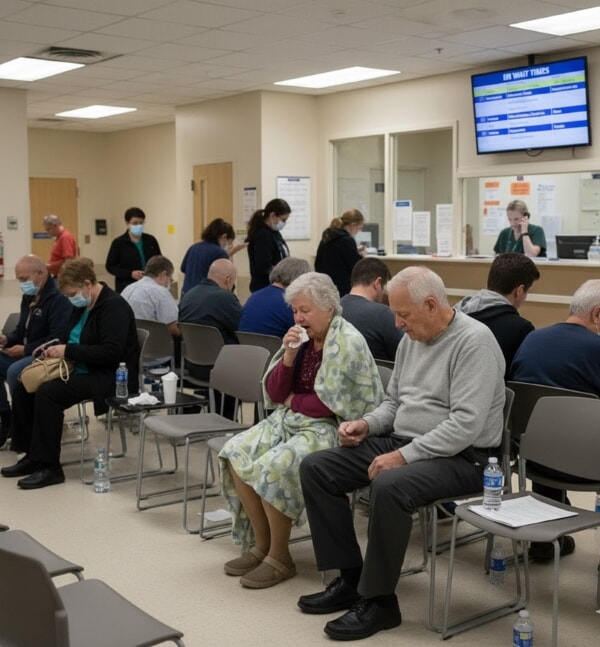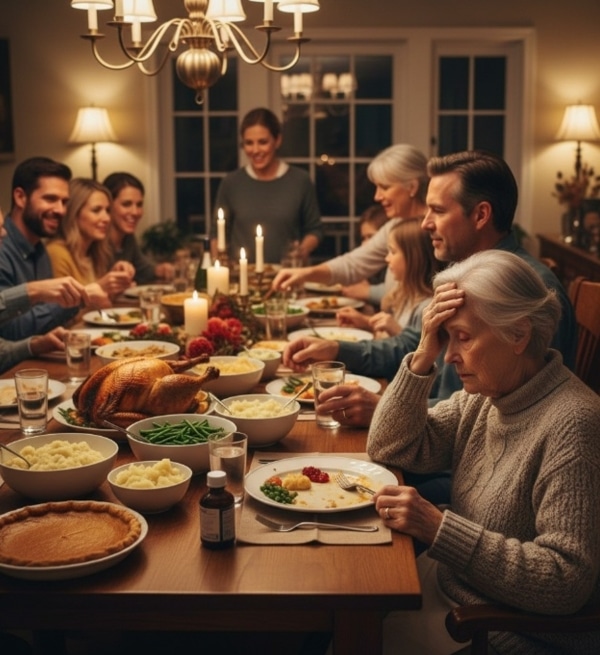Health Officials Warn of Holiday Spike in Respiratory Illnesses as New Flu Mutation Spreads Nationwide

Close family gatherings over the Thanksgiving holiday, and perhaps into the Christmas and New Year's holidays, could lead to an increase in emergency room visits across the United States as COVID-19, influenza, and RSV circulate earlier than usual.
Health officials are also tracking a new mutation of Influenza A H3N2 that is not covered by this year’s flu vaccine, raising concerns as winter approaches.
The new strain, known as subclade K, has undergone seven mutations and is spreading in parts of North America, including the United States. The current flu vaccine protects against H3N2 but does not cover this specific mutation, which had not been identified when the vaccine was developed.
Knowing that there’s a new mutated strain out there and H3N2 generally causes more severe disease is concerning. — Dr. Robert Hopkins Jr., medical director of the National Foundation for Infectious Diseases, interviewed on NBC’s “Today” show.
Symptoms of subclade K resemble those of seasonal influenza. They include fever, chills, body aches, headaches, fatigue, congestion or runny nose, and coughing. The onset is often sudden. “It’s that hit-by-a-truck feeling,” Hopkins told “Today.”
Forbes reports that this specific mutation is now dominant in Japan, the United Kingdom, and Canada.
Respiratory Illness Trends Across the Country
Respiratory illness activity remains low or very low nationally, according to the CDC. However, several large states are reporting increases ahead of the holidays.
California
California officials report low but rising influenza levels and steady COVID-19 hospitalizations. RSV is increasing in parts of Southern California, including Los Angeles, Riverside and San Diego counties. High travel volumes often drive early holiday surges in these regions.
Texas
Texas is seeing moderate RSV activity across the eastern half of the state, with the largest increases in Houston and Dallas–Fort Worth. Flu cases remain low but are climbing. COVID-19 emergency room visits are stable but expected to rise after holiday gatherings.
Florida
Florida reports some of the highest RSV activity in the nation. Influenza levels are low but increasing, especially in central and southern counties. COVID-19 remains low based on wastewater surveillance.
New York
New York shows overall low respiratory illness activity, although flu cases are rising in western and central regions. RSV is growing in several upstate communities. COVID-19 hospitalizations remain low statewide.
Midwest and Great Lakes Region
States in the Midwest, including Illinois, Michigan and Ohio, continue to report low acute respiratory illness levels, though many are seeing slight week-to-week increases in influenza. Surveillance sites show stable COVID-19 trends but steady RSV growth.
Nationwide, RSV activity is increasing across several southern and southeastern states. Seasonal flu is still low but rising. COVID-19 remains low by hospitalization and wastewater metrics but may increase after the holidays, following historical patterns.
Why Older Adults Face Higher Risk
Older adults face more severe complications from respiratory illnesses because the immune system becomes less efficient with age. Chronic conditions such as heart disease, diabetes, COPD and cognitive impairment can make recovery more difficult.
For adults 65 and older, infections often lead to:
- Hospitalizations
- Pneumonia
- Falls
- Dehydration
- Functional decline
- Temporary or permanent loss of independence
Even short illnesses can trigger long-term care needs if mobility, strength or cognitive function decline during recovery. Families often turn to home health aides, assisted living or skilled care facilities during these periods.
How In-Home Caregivers Help Reduce Infection Risks
In-home caregivers play a central role in protecting older adults from seasonal viruses. Caregivers monitor symptoms, track changes in breathing or energy levels and take steps to prevent infection before it reaches the household.
Many agencies require routine handwashing, the use of personal protective equipment when needed, and strict sick-leave policies to prevent caregivers from working while ill. Caregivers often assist with frequent disinfecting of high-touch surfaces, medication reminders, and hydration, all of which help reduce the severity of respiratory illnesses.
Caregivers also help older adults avoid crowded spaces and schedule appointments during lower-traffic hours. When symptoms appear, caregivers recognize early warning signs and work with families to seek prompt medical attention. This oversight helps prevent complications that may lead to hospitalization or long-term decline.
How Assisted Living and Long-Term Care Facilities Protect Residents
Assisted living, memory care, and skilled nursing facilities follow infection-control protocols designed to prevent and contain viruses like influenza, RSV, and COVID-19. These facilities often use enhanced cleaning schedules, protective equipment for staff, visitor screening, and rapid access to testing. Many also run seasonal vaccination clinics on-site, making flu and COVID-19 immunizations easier for residents and staff to receive.
Ventilation improvements—such as increased air exchanges and the use of HEPA filtration—help reduce airborne virus spread in shared areas. Staff members receive training on infection-prevention procedures and are required to report symptoms immediately. When illnesses appear in a facility, administrators often isolate affected residents, adjust group activity schedules, and communicate with families to keep them informed.
How Families Can Reduce Holiday Illness Risks

Health officials recommend several steps to protect older adults at holiday gatherings:
1. Encourage handwashing
Ask guests to wash their hands when they arrive and before meals.
2. Stay home if sick
Even mild congestion or fatigue can signal early infection, especially in children.
3. Improve indoor ventilation
Open windows briefly or use air purifiers to reduce viral particles.
4. Use outdoor space when possible
Fresh air lowers the risk of transmission when groups gather.
5. Keep masks available
Older adults and immunocompromised guests may feel safer using them in crowded rooms.
6. Stay current on recommended vaccines
Flu shots, COVID-19 vaccines and RSV immunizations for eligible adults help reduce severe illness.
7. Avoid sharing drinks and utensils
Simple steps prevent unnecessary exposure.
8. Plan for recovery
Monitor symptoms closely and seek care early, especially for adults with chronic conditions.
Preparing for the Season Ahead
Holiday gatherings bring connection and joy, but they also increase the spread of respiratory illnesses that pose real risks for older adults.
Staying informed and taking preventive steps help protect loved ones and reduce the likelihood of complications that may lead to hospitalization or long-term care needs.


